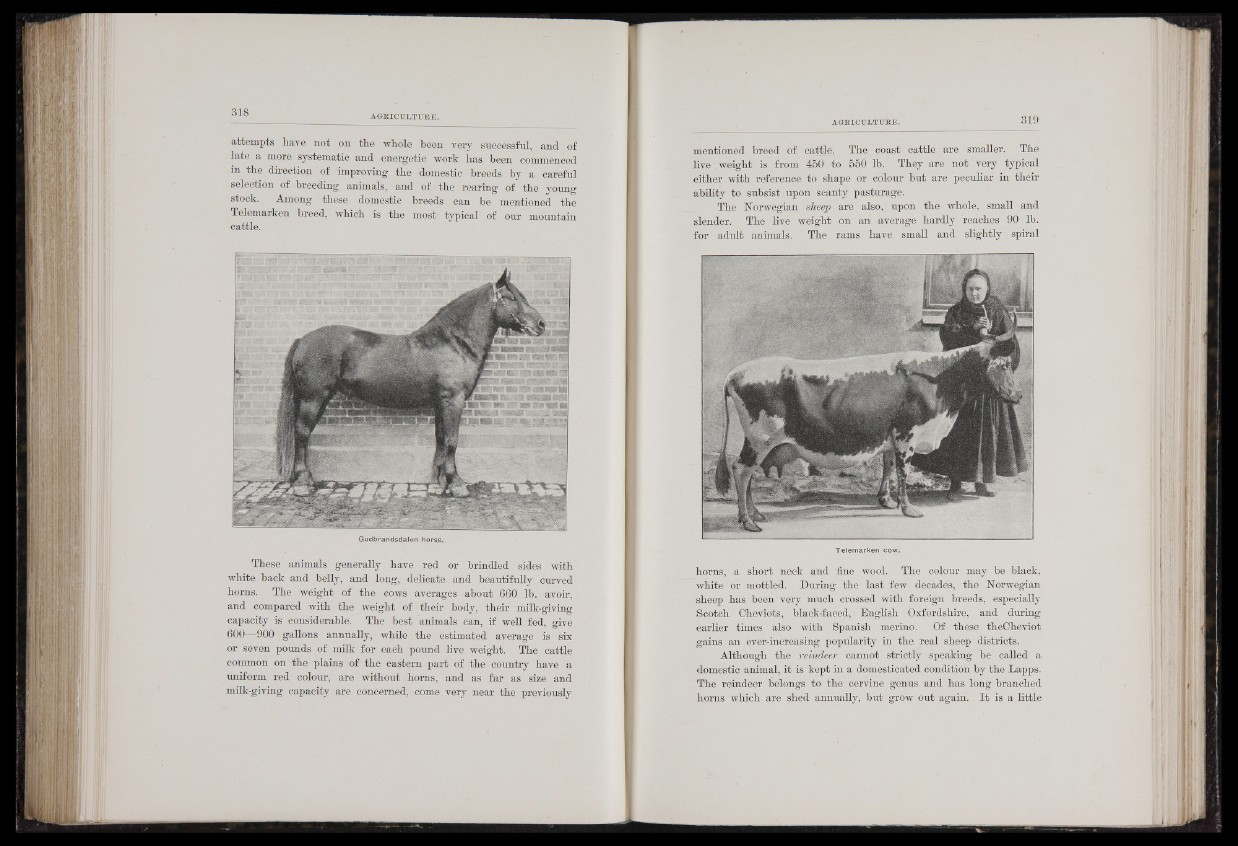
attempts have not on the whole been very successful, and of
late a more systematic and energetic work has been commenced
in the direction of improving the domestic breeds by a careful
selection of breeding animals, and of the rearing of the young
stock. Among these domestic - breeds can be mentioned the
Telemarken breed, which is the most- typical of our mountain
cattle.
Gudbrandsdalen horse,.
These animals generally have red or brindled sides with
white back and belly, and long, delicate and beautifully curved
horns. The weight of the cows averages about 660 lb.' avoir,
and compared with the weight of their body, their milk-giving
capacity is considerable. The best animals can, if well fed, give
600—900 gallons annually, while the estimated average is six
or seven pounds of milk for each pound live weight. The cattle
common on the plains of the eastern part of the country have a
uniform red colour, are without horns, and. as far as size and
milk-giving capacity are concerned, come very near the previously
mentioned breed of cattle: The coast cattle are smaller. The
live weight is from 450 to 550 lb. They are not very typical
either with reference to shape or colour but are peculiar in their
ability to subsist upon scanty pasturage.
The Norwegian sheep are also, upon the whole, small and
slender. The live weight on an average hardly reaches 90 lb.
for adult animals. The rams have small and slightly spiral
Telemarken cow.
horns, a short neck and fine wool. The colour may be black,
white or mottled. During the last few decades, the Norwegian
sheep has been very much crossed with foreign breeds, especially
Scotch Cheviots, black-faced, English Oxfordshire, and during
earlier times also with Spanish merino. Of these theCheviot
gains an ever-increasing popularity in the real sheep districts.
Although the reindeer cannot strictly speaking be called a
domestic animal, it is kept in a domesticated condition by the Lapps.
The reindeer belongs to the cervine genus and has long branched
horns which are shed annually, but grow out again. I t is a little